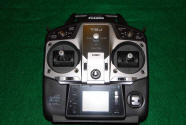 +
+
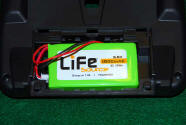 +
+
Last Update: March 19, 2012
EC12 Building Home Page
Special Presentation Home
Radio and Batteries
by Rick West
The Lithium battery article by Dick Hedderick is excellent reading. LiFe batteries are at the leading edge of RC power that is available and affordable. Dick provides the properties information along with the application. His chart of the running voltages in time is very clear in the superiority of this chemistry for a battery at this time. It seemed like we blew through the LiFo battery in a couple of years with horrific tales of safety issues. Most were caused by misuse and handling during charging. It has turned many away from the advancement. This is learned now, as the LiFe chemistry comes forward in a user friendly way.
Nonetheless, there are strong cautions for safety and protecting your investment in these batteries. So, this is to add to Dick’s cautions. The first is that a dedicated charger is a must. This can be one that will charge NiMH types also but must be stated to use with Lithium and has the specific programming. Programmed chargers are growing in popularity, as it is realized they can handle multiple battery chemistry and have the features that care for the battery during charging for years of battery life. The list of these features can be long so they will be treated below on the subject. Second, is to understand the ratings for the Lithium battery so that the correct information is put into the charger. It is not complicated but different from the long used NiMH battery.
Presented here is more of the practical and goes into the hands on use in RC sailing. Also the Futaba T6J radio has arrived here with new things you will like.
This will begin with the LiFe batteries because adding another TX and battery type to sailing should be melded along with the charger. It will save time and money with just some lightweight homework.
Futaba T6J
 The
T6Ex (see note below) was good TX for the class but required modifications that were technical.
This model has addressed those issues. This meaning removal of the external
antenna (RC users did the R&D for them) for one. They also now have a rotary control for
channel 6 which will be handy for most here as jib trim control. They have also
reduced the power voltage for the TX to that of the RX. This
The
T6Ex (see note below) was good TX for the class but required modifications that were technical.
This model has addressed those issues. This meaning removal of the external
antenna (RC users did the R&D for them) for one. They also now have a rotary control for
channel 6 which will be handy for most here as jib trim control. They have also
reduced the power voltage for the TX to that of the RX. This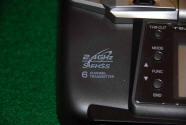 will cut the number of batteries needed to carry by one third or less. Finally,
they have broadened the use of mixing channels into the area we operate. This
will generate much thought for sequenced operations on a two position switch in
trim use and the tacking maneuver. There are a lot of programming features now
but that is in the reading than detailed here.
will cut the number of batteries needed to carry by one third or less. Finally,
they have broadened the use of mixing channels into the area we operate. This
will generate much thought for sequenced operations on a two position switch in
trim use and the tacking maneuver. There are a lot of programming features now
but that is in the reading than detailed here.
What they have not done is loose the alkaline battery mentality for TX power. It is provided still in the design of the battery compartment yet it is stated online there is another door that can be ordered for those that use rechargeable batteries. The statement goes further to say that most modelers prefer rechargeable. Duh, I am sorry…this is the 21st Century.
The good news is the springs and tabs for the AA batteries are easily removed by slipping them out of their tracks and de-soldering one wire. The AA partitions on the battery compartment door need to be cut down with a Dremel. This will leave lots depth for a flat pack shown here and the power connection wire tag to the TX (shown left of center on the circuit board). Further surgery will be needed to use the NiMH 6V five pack we all have. There is no need for the NiMH eight battery pack.
Even better is that the Hobbico LiFe 6.6 volt 1900mAh battery will fit perfectly inside. This battery will last all weekend. If you need further surgery to the battery compartment, the back of the TX comes off with four screws and no wiring issues to deal with. Even better this battery can also be used for the RX too. Only in the most demanding conditions would you need more than one battery per day for each. One battery type and size for both…would you have dreamed of this happening?
T6EX: For those having this no longer available TX can get a LiFe battery to fit. The Hobbico LiFe 9.9v 1500mAh 1C TX battery will replace the NiMH 8AA flat pack. It is the only one available for this by Hobbico and at $43.
Lithium Battery Ratings
This information and more will be provided in each packaging of a Hobbico
LiFeSource battery from Tower Hobbies.
“C” Rating: This is not the number of battery cells in the pack. Important. This rating is a multiplier of the battery capacity (mAh), more commonly called “ma” but meaning milliamp hour. “C” is 1/10th the mAh capacity. This figure for a single "C" is also the maximum punch of the battery in amps and the maximum charging amperage to be used. Example:
A 1C 1100mAh Lithium battery can supply a maximum of 1.1 amps and charge at 1.1 amps. Not good for the EC12. 2C is 2.2 amps is equally not good.
Shown here is a “3”C 1900mAh battery that can provide 3 x 1.9 amps for a total punch of 5.7 amps. The RMG SmartWinch loves it and the battery will last all day most of the time depending on the conditions.
One tenth the “mAh” capacity denotes the maximum charge rate for the battery; 1.9 amps in this example. Most do not charge that high for better longevity of the battery. 1.1 – 1.3 amps will be cooler if you can set this.
Summary: One tenth the battery capacity equals the max input from the charger. 1C equals 1.1 amps; xC multiplied to one tenth the battery capacity equals the output of the battery in amps to the electronics on board. Shown here; 1900mAh = 1.9 amps x 3C = 5.7 amps
Now that was not so bad, huh? Okay, about Lithium cells; simply 3.3 volts per cell wired in series. Sometimes you will see this displayed as the “S” value. The one shown here has two cells (2S). This matches the 6.6 volt rating. This is good for inside the boat. Those needing 9.7 volts for the TX will need a 3S pack. You may need some additional surgery with the Dremel in the battery compartment to fit one. This will be easy as there is no wiring attached to the back of the case.
This is all simple but still why the note in the first sentence. When a charger is involved confusing 3C and 2S could become an issue not wanted.
The industry considers a fully charged Lithium battery cell at 3.6 volts and a dead one at 2.5 volts. Looking at Dick Hedderick’s chart for a 6.6v pack over a time span, you will be impressed.
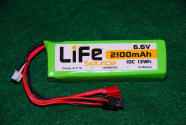 Shown
here is a higher capacity battery for the boat electronics that has the Deans
plug wired into the loom. You will not need the 21 amps this battery can
provide. However, it will provide for the most demanding maneuvers in heavy air.
(See the 38 boat in Dick’s article compared to others. Also see the stability of
the 94 boat rounding the leeward mark and coming to close haul. This is high
power stuff.)
Shown
here is a higher capacity battery for the boat electronics that has the Deans
plug wired into the loom. You will not need the 21 amps this battery can
provide. However, it will provide for the most demanding maneuvers in heavy air.
(See the 38 boat in Dick’s article compared to others. Also see the stability of
the 94 boat rounding the leeward mark and coming to close haul. This is high
power stuff.)
The white tab on all these batteries is for the connecting to the balance board. These tabs are specific to the number of cells in the battery.
Lithium can be a bit cheaper than Nickel Metal Hydride, lighter in weight and battery capacity can be lower for the same use time. Battery inventory is also reduced.
Tower Hobbies
They have embraced the LiFe battery. They have Tech
Notes for each product item providing what is included, features and
specifications. This is where you find out about the “Door” for the T6J, if
needed.
LiFe Charger
The
Hobbico LiFeSource balancing charger AC/DC input for two and three cell
batteries is simple and very easy to use. It is dedicated to LiFe batteries and
for 2S-3S cell range and provides Futaba J and Universal connectors from the
charger. It is the perfect traveler and all you need for Lithium on the road for
$35. This is the same charger shown in Dick’s article.
Multi Charger
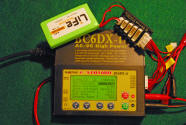 The
Bantam BC6DX-II battery station for the shop is one of the very best. Yep, it is
expense; $150. It charges, discharges and balances controlling every specific
you ask and provides a data readout record for each cell. If and when you get a
bad cell, the data will let you know. If you wish to cycle this process, you can
set the number of cycles. The unit will handle NiCad, NiMH, all Lithium types
and lead acid batteries with dedicated programming for each type with you
inputting all specific levels to be used. You can set any level for the rate of
charge or discharge, a max battery temperature and a timer if the battery will
not complete a process in the expected time or if left unattended (forgotten) or
is defective.
The
Bantam BC6DX-II battery station for the shop is one of the very best. Yep, it is
expense; $150. It charges, discharges and balances controlling every specific
you ask and provides a data readout record for each cell. If and when you get a
bad cell, the data will let you know. If you wish to cycle this process, you can
set the number of cycles. The unit will handle NiCad, NiMH, all Lithium types
and lead acid batteries with dedicated programming for each type with you
inputting all specific levels to be used. You can set any level for the rate of
charge or discharge, a max battery temperature and a timer if the battery will
not complete a process in the expected time or if left unattended (forgotten) or
is defective.
The unit comes with an octopus of connectors for any hobby use and beyond. Like the dedicated LiFeSource charger, it can be powered by AC or DC. Included is a balancing board with plugins for two cells through six.